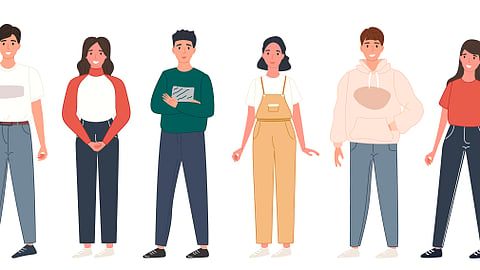View point on the Gen Z news consumption trends
Gen-Z is a group of individuals who were born into a world of fast speed internet where new technologies emerge on the daily. We went from earphones to earpods, computers to iPads and text to reels. There has been a lot of stimulation that has been triggered by the mass involvement of Gen-Z with the digital media. This is a section everyone wants to target as they move from the “young crowd” to the “biggest cluster of digital participants.” As a publisher, you might want to leverage this digital savvy crowd who are known to be opinionated but ready to give anything a shot.
Social media and News have tried to coexist in a mutually beneficial contract for years now but it’s never quite worked out. This could be because of the messaging or just the ever changing algorithms. Although the crowd doesn’t trust social media when it comes to news, it’s still where they interact most with news/entertainment content.
As a digital first generation, this is a crowd that has their comfort zone set on the internet. They’re keeping track of the relevant apps, the news sources that cater to their niche, stories they want on their Google Discover and more. They’re constantly trying to make use of the technology to bring themselves the highest possible efficiency. But why the lack of interest in news platforms? Well, rather than thinking of this as a website/platform specific problem, it’s important to note that there has been an overall decline in consumption of news due to the upsetting nature of news in these recent times.
Publishers and Gen-Z
Gen-Z has been known to intentionally sidestep from many news media platforms simply due to the overwhelming stories of distress. As a publisher, what does this mean?
Take a moment to go through all major stories in the last five years as a reader. You’ll see at least a few of these things -
Headlines that seem to be screaming at you
Overwhelming data on death rates, systematic failures, disaster news etc
An up-surge in crime reporting and documentary viewing
Social media posts that shed light of abuse stories from everywhere
Data driven stories on some sort of devastation
Distressing climate news with increasing evidence
To say it’s been a lot would be an understatement. Readers are intentionally moving towards other kinds of news stories and content to distract themselves from the never ending cycle of doom and gloom. This is where you, as a publisher, reevaluate your content strategy. Albeit it’s important to create a sense of urgency, but it’s not the primary tool while reporting stories.
Create stories not stop signs
While we all want our readers to stop and read our stories, it needn’t be a stop sign that creates alarm or panic. Write stories that simply explain the matter with enough detail to provide evidence. Some stories don’t need as much data as the others, find the balance.
Positive news are great
Not all stories have to be a tragedy. Readers are seeking positive news, be it regarding climate change or policy changes, remember to balance off the sad/bad news with some good ones. Follow through with your stories and give the readers an update if the tribal community did not in fact get displaced, or if petrol prices went down, even if it’s by very little.
Social media stories
Create a template for your social media stories - save time. Have stories that would interest Gen-Z shared on your social channels in order to get more traffic from there. Focus on engagement and retention - not all clicks will land as conversions.
Trust is important as ever
Gen-Z is not loyal to a single news platform. This is why you must ensure that you verify your stories and update them accordingly. This is a crowd that is actively comparing your story with all other sources and if you’re wrong, they’ll let you know. Make use of this UGC and ensure that you do a thorough fact checking.
Being digital savvy is not a bad thing
Unlike your older demographic, Gen-Z is ready and eager to participate digitally. This means that if you leave a good impression, you’re more likely to have them engage with your content, share stories, get more impressions etc. While they may not stick to a single news source, you could have subscription plans that allow these digital nomads to flourish.
Conclusion
Gen-Z has grown up with the internet and all that comes with it. It understands the algorithm and is confused by it probably as much as you as a publisher are. There’s a long journey ahead for digital media publishers but you know that you have Gen-Z with you all along that way. As they move to become your potential subscribers, it’s important to focus on their demands and expectations. Cater to this digital savvy group and watch your content float with twice as much speed. Trust is definitely on the forefront but perhaps we can start with creating content that is not preachy but educational, with trends that are meaningful and yet not sensationalized, with good and sad stories. News media needs to find a balance and perhaps Gen-Z will beat us to it!

